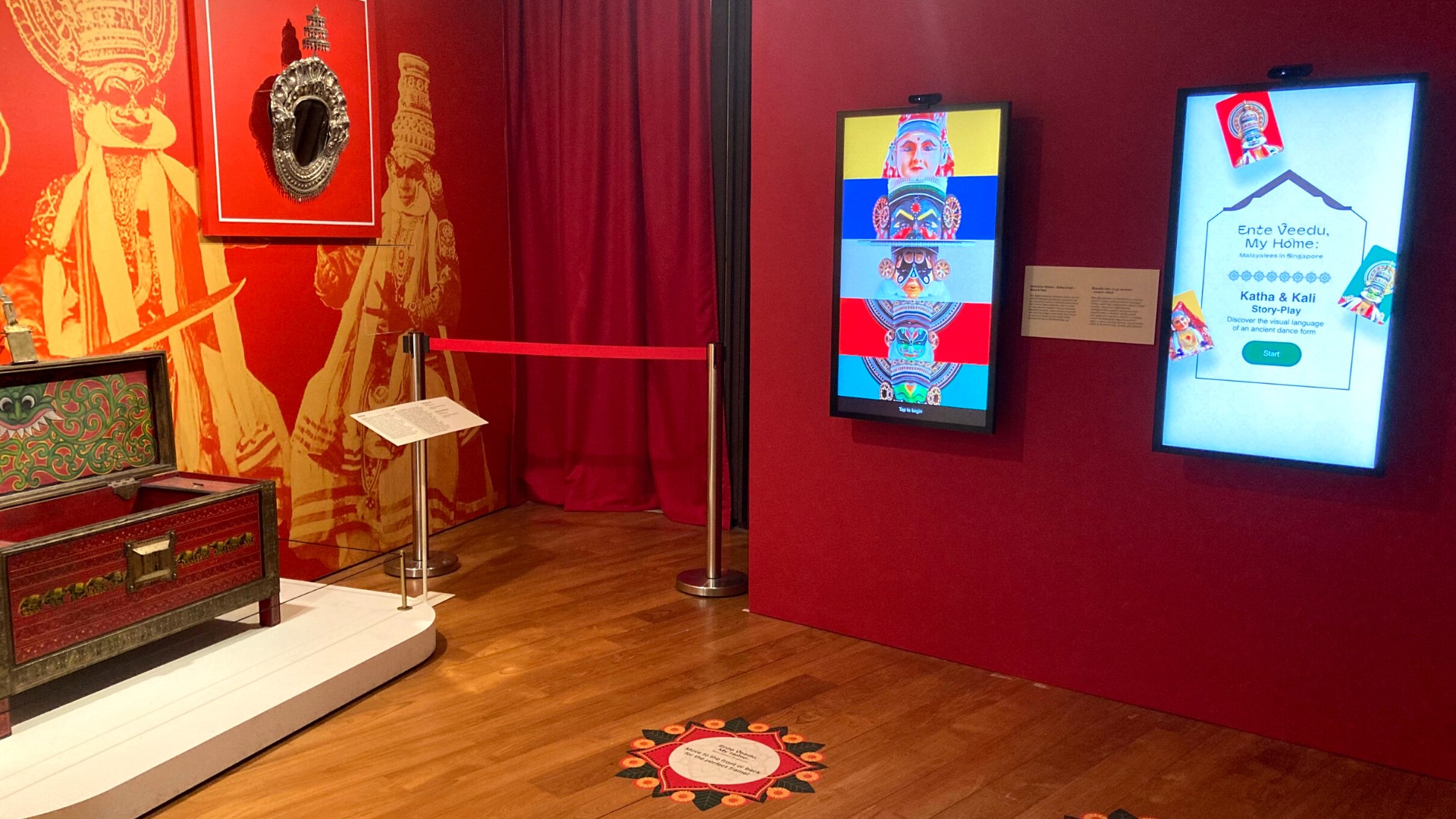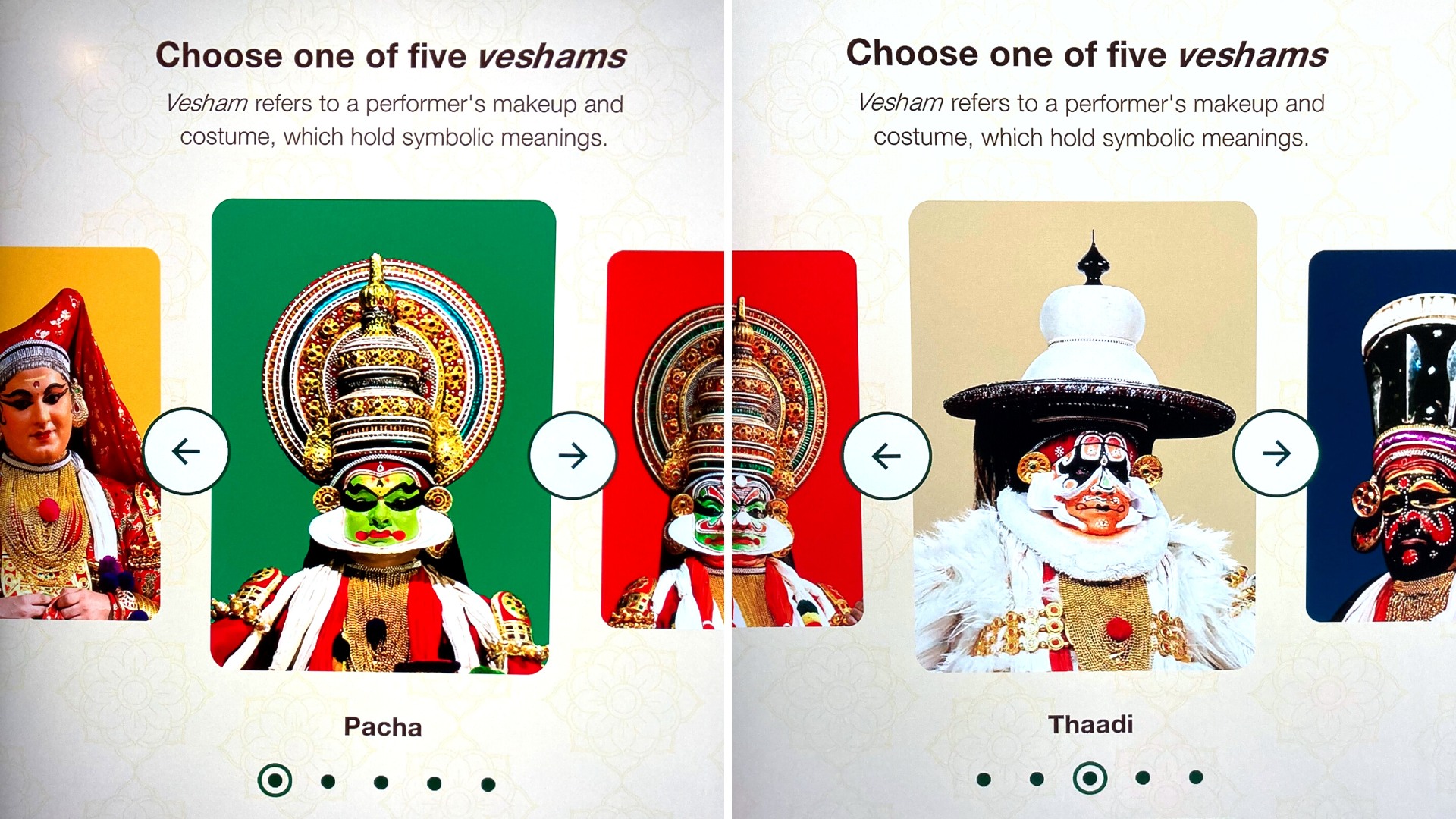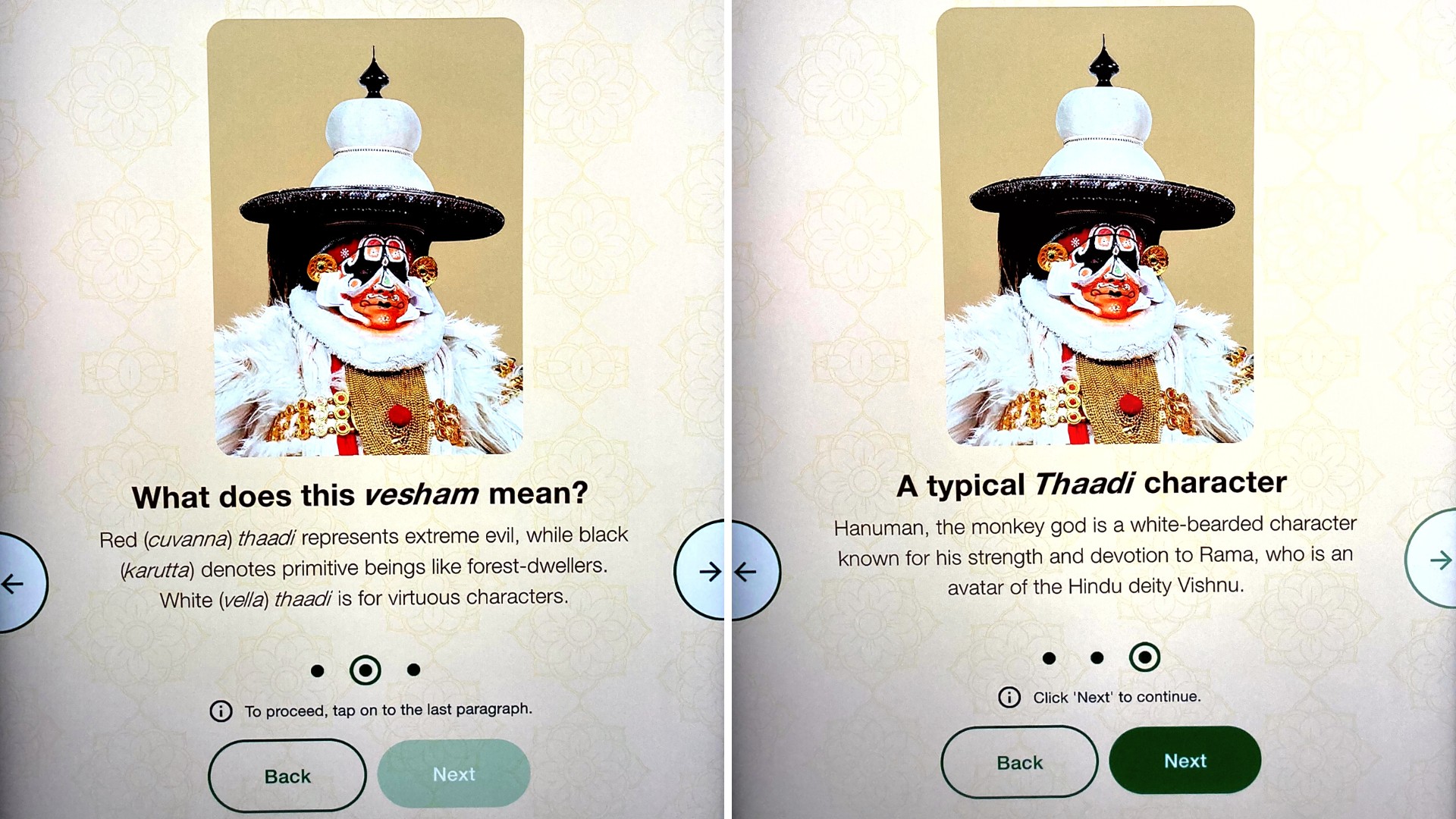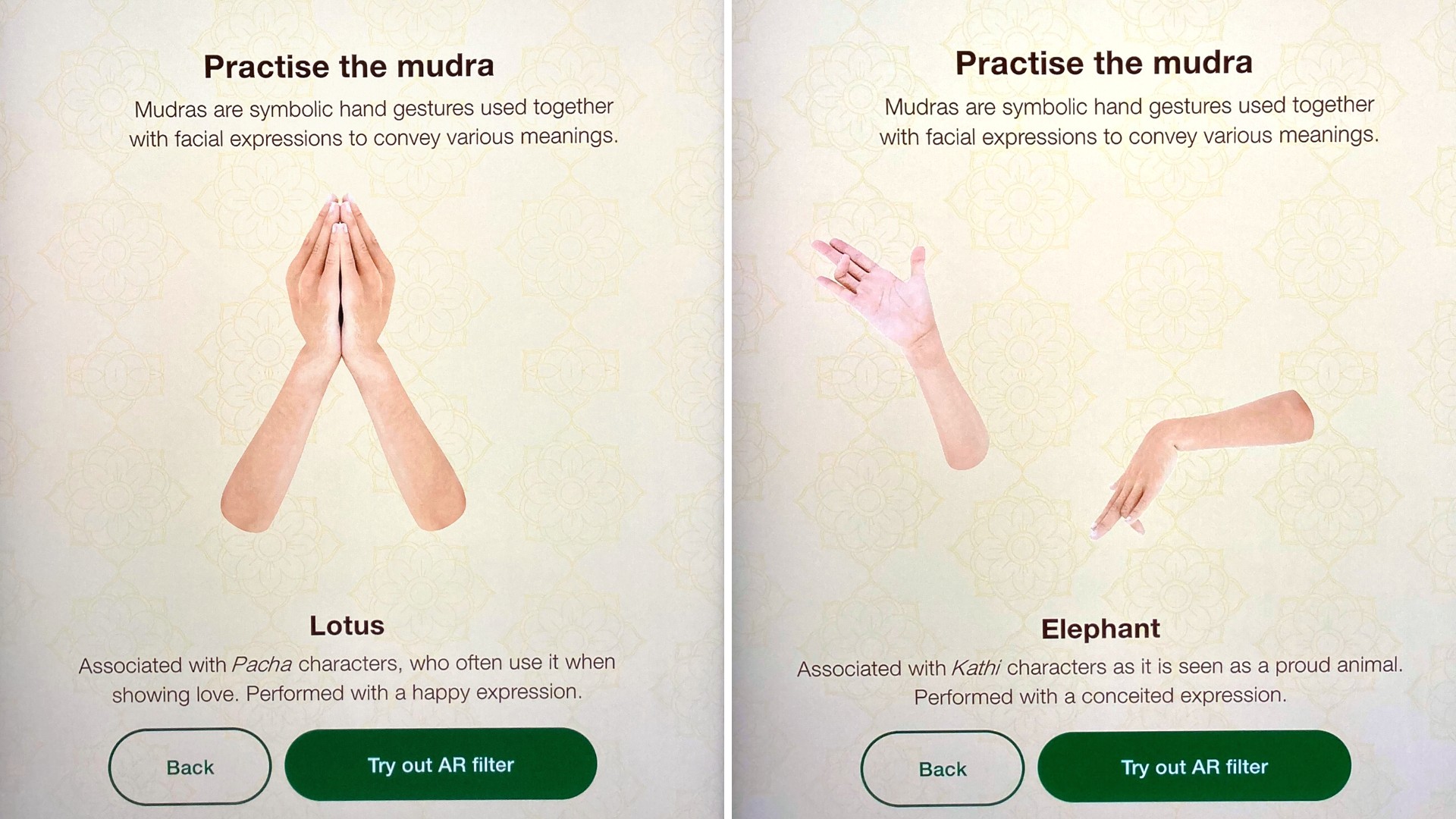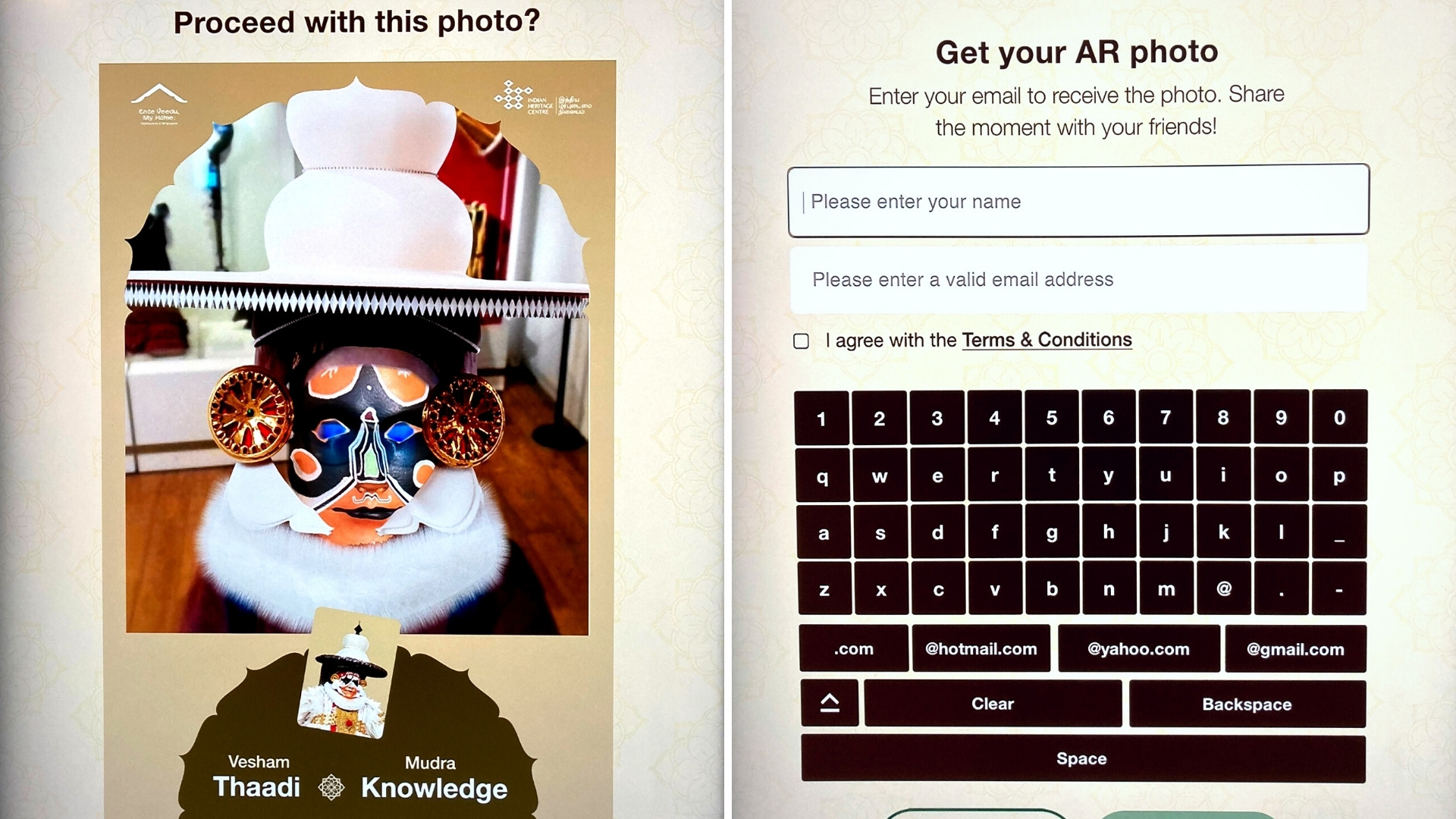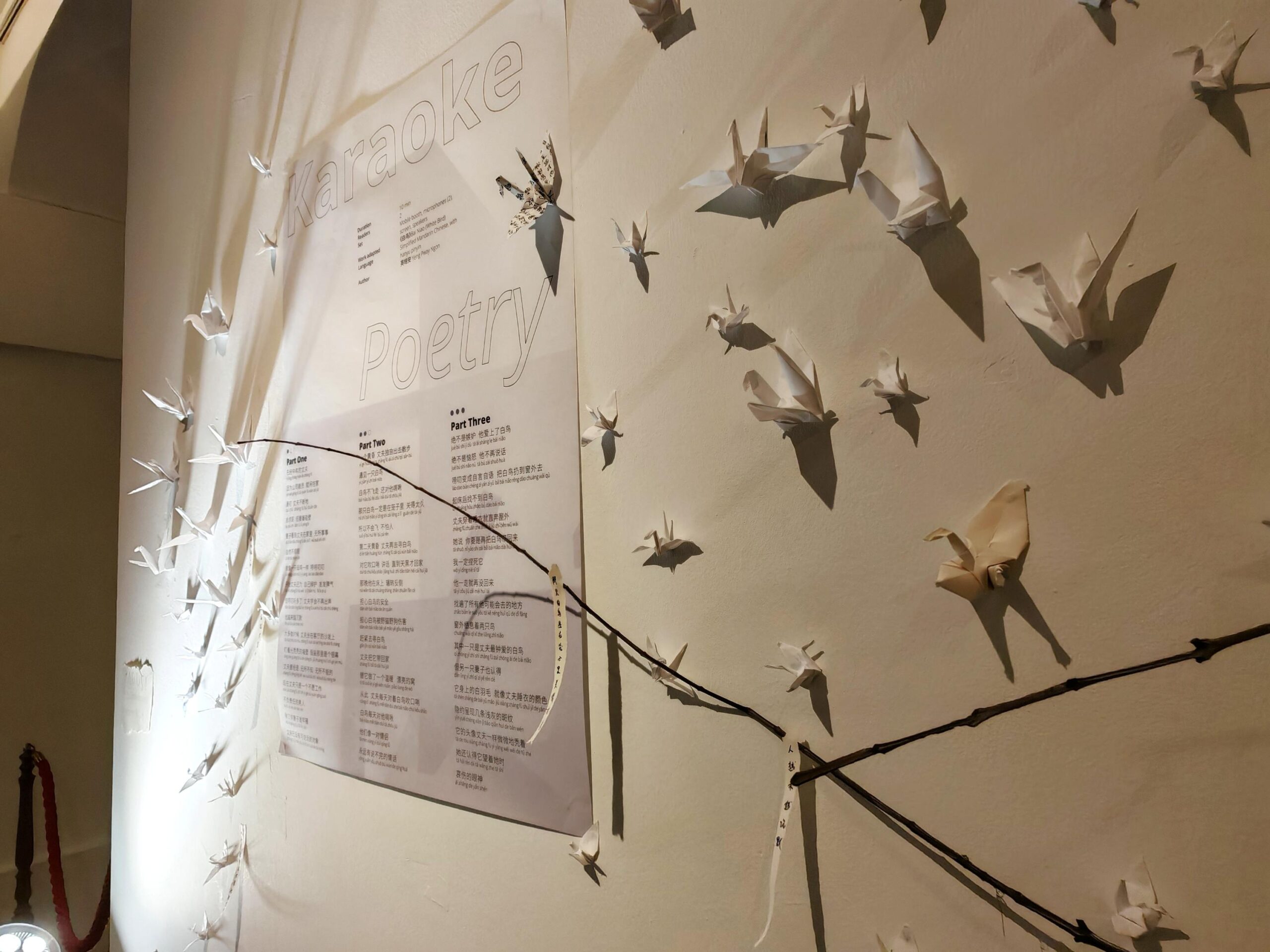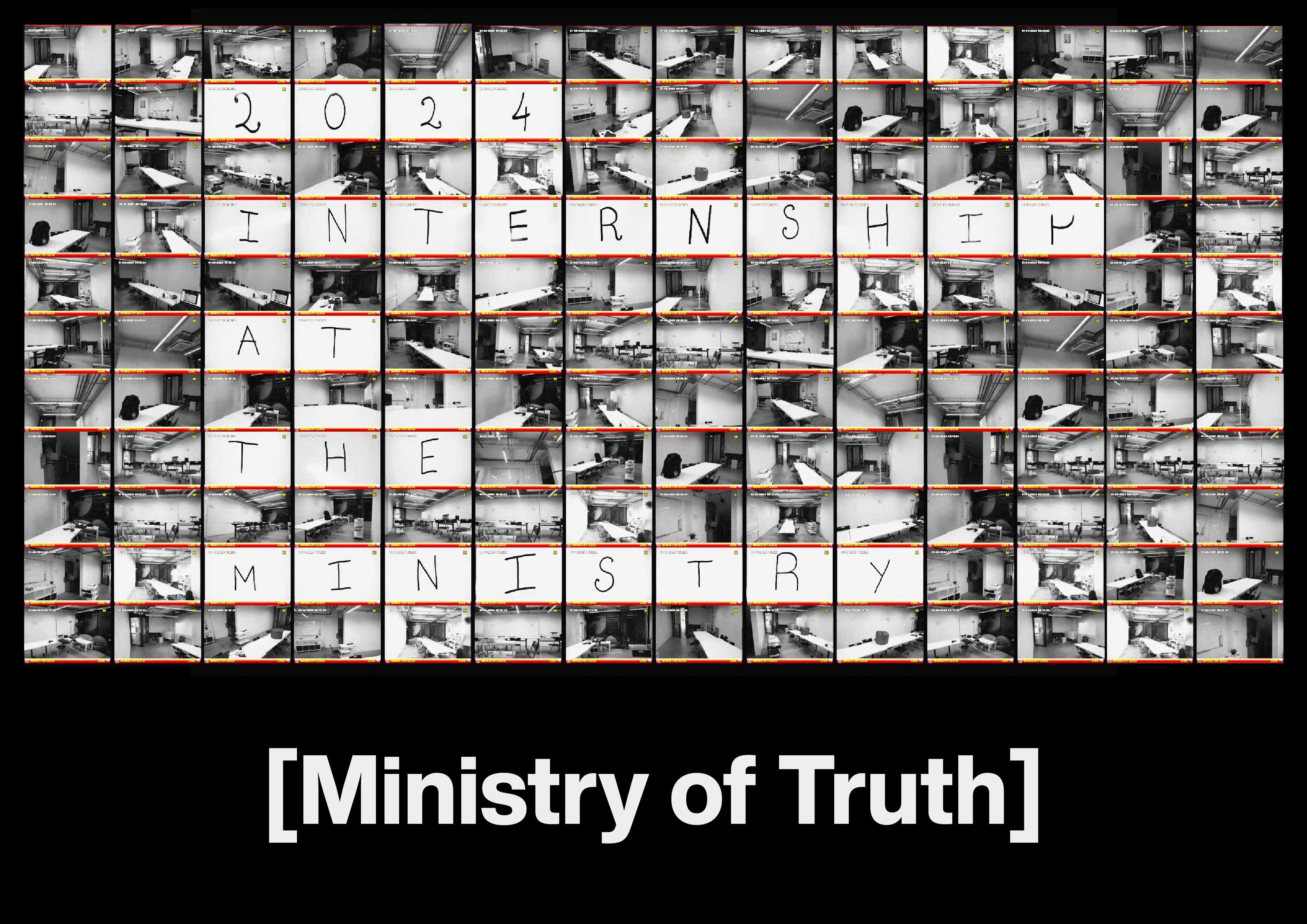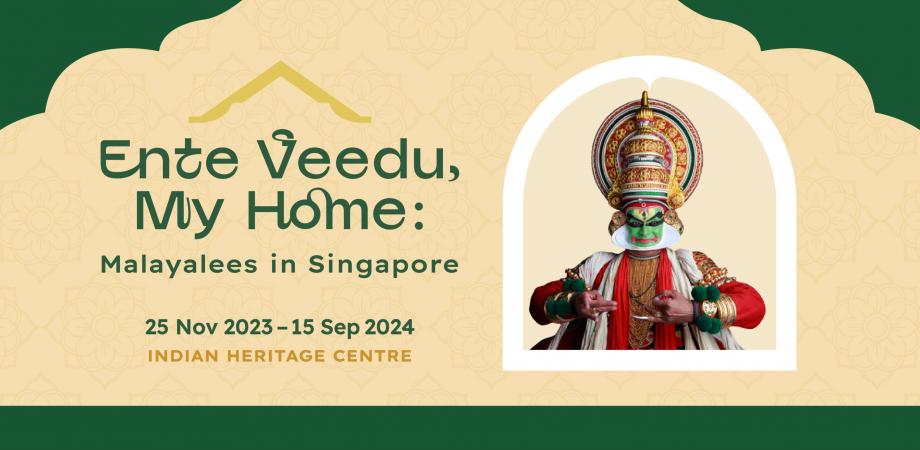
The Indian Heritage Centre approached us to provide content development and copywriting services for a digital interactive about kathakali, a theatrical dance form that originated in Kerala, India.
As the interactive was part of a larger exhibition about Malayalees and had to appeal to a wide range of audience profiles, our goal was to introduce visitors to the basics of this complex art in a fun way, so as to educate and inspire curiosity about the intricacies of Indian history and culture.
Content development
Kathakali means ‘story play’. This theatrical dance form combines expressive gestures, vibrant face makeup, elaborate costumes and complex footwork to tell stories, mostly drawn from the Hindu epics Ramayana and Mahabharata as well as the devotional Bhagavata Purana.
In discussion with IHC and Trinax, the creative agency appointed to design and produce all digital interactives in the exhibition, we decided to focus on two key aspects of kathakali: its veshams and mudras.
Vesham refers to a performer’s makeup and costume. There are five veshams in kathakali, and each represents a particular type of character – such as a noble hero or demon. Mudras, meanwhile, are symbolic hand gestures used together with facial expressions to convey different meanings. The language of mudras is complex: from twenty-four basic mudras, a variety of combinations exist that involve either a single hand or both, all associated with specific words.
As little information about kathakali is available in English-language publications or videos, we consulted Dr Ganesh Neelakanta Iyer – a computer scientist and kKathakali performer – who helped review our content for accuracy and also advised on suitable mudras for the project.
User experience design
To foreground the link between veshams and character types, the user flow of the interactive experience starts and ends with these.
First, users are invited to choose one of the five veshams. They learn about distinctive features of the costume, what the vesham says about the character type, and examples of characters that belong to that category.
Users are then shown an animated visual of a mudra associated with their chosen vesham, and asked to try it out. A short explanation of the gesture’s meaning and accompanying facial expression is provided.
After practising the mudra, they get to pose for a photo with an AR filter that transforms their face into the vesham – complete with face make-up and headdress!
The photo taken is sent to an email address provided by the user, and the interactive ends with an option to explore other veshams by restarting the experience.
Through clear and concise UI copy, this digital interactive offers bite-sized information about an art form likely unfamiliar to the average Singaporean.
Titled Katha & Kali – Story Play, it is currently on view until September 2024 in Ente Veedu, My Home: Malayalees In Singapore. The exhibition is available for viewing until 14 September 2024.
